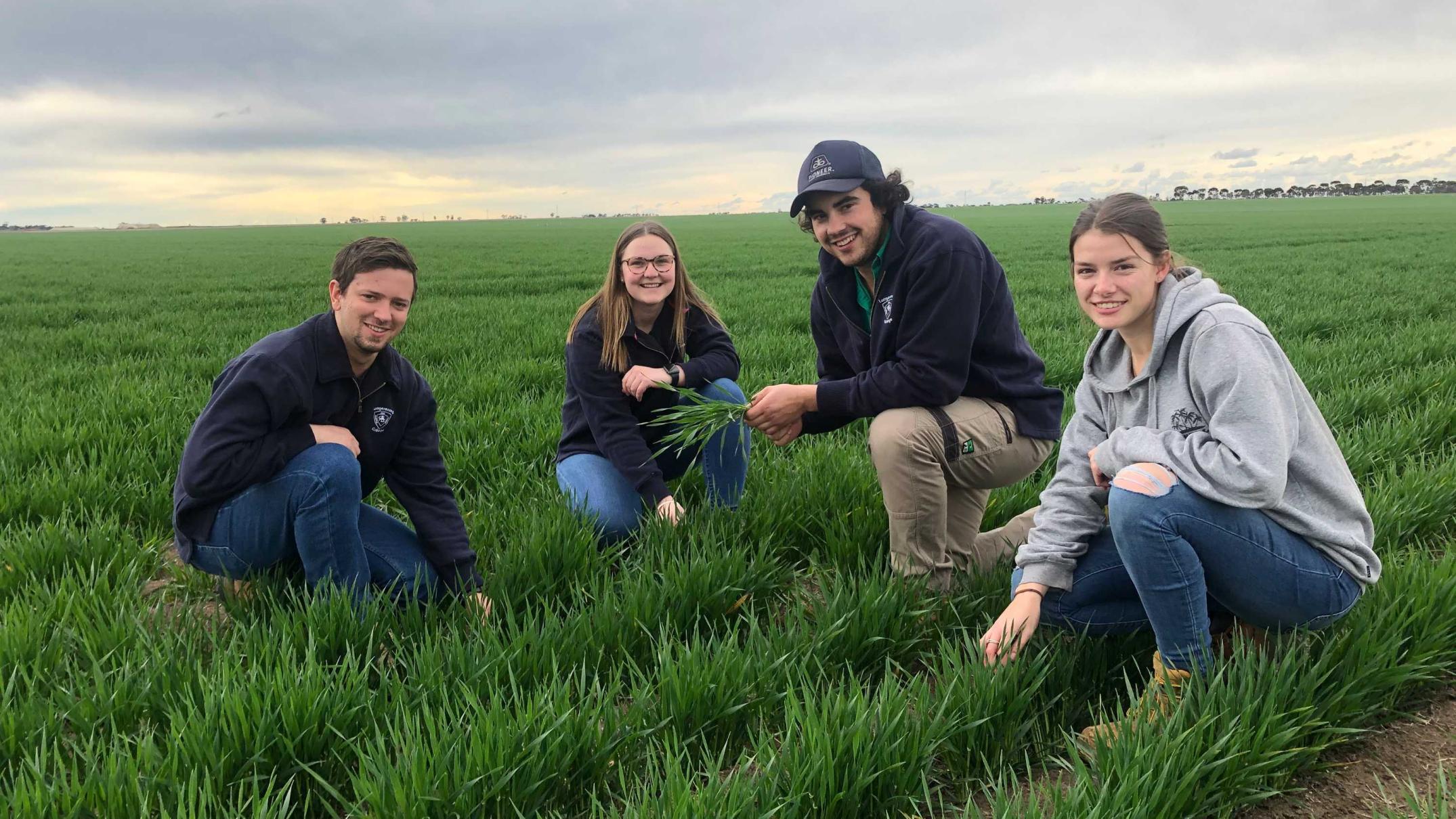Universities across Australia are enjoying a big spike in enrolments in agricultural science courses, as young people take advantage of lower fees and good job prospects.
Key points:
- Enrolments in agricultural science courses have increased in Australia
- Enrolments at one college in Western Victoria are at a 30-year high
- Students say a career in agriculture is more appealing after seeing the sector thrive during COVID-19
While COVID-19 trampled on most sectors of the economy last year, agriculture has thrived and young people are looking at the industry with fresh enthusiasm.
Demand has more than doubled for the University of Queensland’s Bachelor of Agricultural Science degree this year, with 50 places offered compared to 22 offers in 2019.
The university says, due to a smaller year 12 cohort in 2020, it has been comparing 2019 enrolments to the current year’s intake.
At Longerenong College in western Victoria, the number of first-year students enrolled is up by 66 per cent compared to last year.
“I’ve worked at Longerenong for 30 years and this is the biggest intake we’ve had in my time here,” principal John Goldsmith said.
Mr Goldsmith said he thought there were several factors behind the increase.
“Also, when we start talking about ag technology and the way of the future, young people get really excited.
“Certainly it depends which state you’re in, and there are highs and lows, but on the whole, ag is going really well.”
‘Pretty good year for ag’
In June, the federal government announced agriculture students would pay 62 per cent less for their degrees.
The proposed student contribution for 2021 is $3,700 — nearly $6,000 cheaper than it was in 2020.
But Longerenong College student Connor Eastwood said his motivation to study agriculture this year went beyond the money.
“All things considered, it’s been a pretty good year for ag,” he said.
“COVID’s done a lot of things, but it hasn’t slowed ag up a great deal.”
Etira Seehusen is also enrolled at Longerenong this year and on her path to becoming a livestock agent.
“I’ve got the love there for it,” she said.
Not enough graduates
Australian Council of Deans of Agriculture secretary Jim Pratley said the rise in enrolments was across the board.
“Almost without exception, numbers are up from preliminary indications and that varies from 5 per cent to over 50 per cent,” Professor Pratley said.
He said there were three to four jobs available per graduate, and working in the food and textile production industry was the way to go for a positive career.
“I’m really confident. It’s really exciting to be part of agriculture and where it’s going, and I look forward to seeing it prosper even more than it is now.”
At the University of Adelaide, more than 100 new students are settling into their agricultural science degree — an increase in enrolments of 36 per cent.
Jason Able, the university’s head of agriculture, said enrolments were expected to jump again next year.
“Quite simply across the country whatever university teaches agriculture, we simply don’t graduate enough graduates year on year,” he said.
“Our graduates from last year, over 95 per cent of them are in full-time employment.”
Professor Able said the students were starting to see how they could impact society in terms of food production.
“It is wonderful news,” he said.
“We have been pretty steady for the past three years, but to see this magnificent jump it is certainly exciting.”
| Places offered 2020 | Places offered 2021 | Increase | |
|---|---|---|---|
| University of Adelaide | 81 | 110 | 36% |
| Longerenong College | 32 | 53 | 66% |
| University of Tasmania | 30 | 45 | 50% |
| Tocal Agricultural College | 90 | 110 | 22% |
| University of Queensland | 22 (in 2019) | 50 | 127% |
Fewer international students
Local students make up the 50 per cent higher intake for the agricultural science degree at the University of Tasmania.
Tasmanian Institute of Agriculture associate professor Alistair Gracie said it was the highest intake he had seen from domestic students.
“We’ve currently got about 45 students admitted to that degree,” Dr Gracie said.
“That’s new students coming into the offering, and we’ve got about 30 students coming into our associate degree in agribusiness.”
But he said international student numbers were down.
“It’s a tricky one because of the COVID issues and the pandemic,” Dr Gracie said.
“It means that it’s hard for international students to get here.”
Mr Gracie attributed some of the rise in local enrolments to a drop in the cost of the agricultural science degree.
But, he said, more awareness of the food supply chain and the importance of agriculture could also be a factor.
A new chapter
One of the students taking up an agricultural degree this year is Molly Giddings from Wangary on the Lower Eyre Peninsula in South Australia.
She received her offer to study agriculture in Adelaide for 2021.
Ms Giddings said she wanted to study livestock, and the change in the fee structure made the degree more attractive, but she said she would have picked agriculture anyway.
“I felt pretty excited, a bit overwhelmed, and ready to start the next chapter in my life,” she said.




